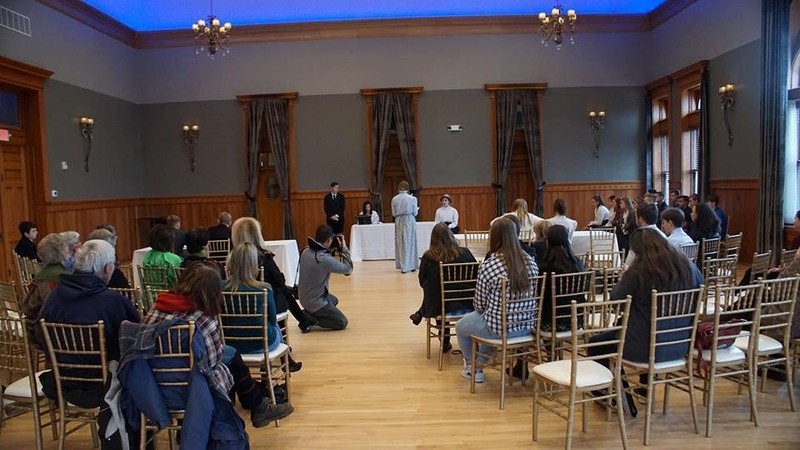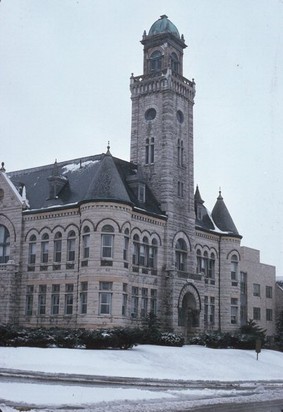1893 Waukesha County Courthouse
Introduction
Text-to-speech Audio
Images
After extensive rehabilitation, the 3rd floor courtroom was inaugurated with a historical reenactment of the Grace Lusk trial--almost exactly 100 years after a Waukesha jury found her guilty of 2nd degree murder in the death of Mary Newman Roberts.

Milwaukee architects Rau & Kirsch designed the Richardson Romanesque building. A 130-foot tower was topped by a seven-foot clock and a statue of Justicia, goddess of justice. The statue now dominates the Museum's second floor.

Backstory and Context
Text-to-speech Audio
The county’s first courthouse was a two-story Greek Revival structure built in 1849, directly over several of numerous native American effigy mounds located in the area. By 1893, the growing county needed a larger judicial seat; Milwaukee architectural firm Rau & Kirsch responded with this turreted Richardson Romanesque structure, wrapped in local Lannon stone and decorative masonry. The 130 foot central tower, topped with both a 7 foot clock and a statue of Justicia (Justice) dominated Waukesha’s modest skyline.
Inside, county residents documented key events and personal dramas. Many paid taxes, registered births, deaths and marriages in offices on the first and second floors. Some citizens stood trial or served jury duty in the third floor courtroom. And a few, like school teacher Grace Lusk, served time in the adjacent jailhouse.
Between 1915 and 1918, several thousand (?) young men, including ___ Carroll College students, registered for the draft here. It’s easy to imagine secretaries personalized these draft cards as information trickled back from Camp Douglass (Illinois), Quantico (Virginia), or posts in France and Belgium. Sixty years later, local activists secured the preservation of the complex by adding it to both the Wisconsin and National Historic Registries.
Today, even though county officials work in a modern facility on Moreland Boulevard, the historic courthouse is still worth a visit. In addition to records of the Lusk trial, WWI draft cards, and travelling exhibits from across the country, visitors can peruse more than 18,000 artifacts and 250,000 visual images in the Waukesha County Historical Society & Museum. The newly rehabilitated courtroom offers a spacious venue for receptions and other gatherings, and more than a half dozen local contractors have converted both the jailhouse and a 1938 addition into two dozen luxury apartments.
